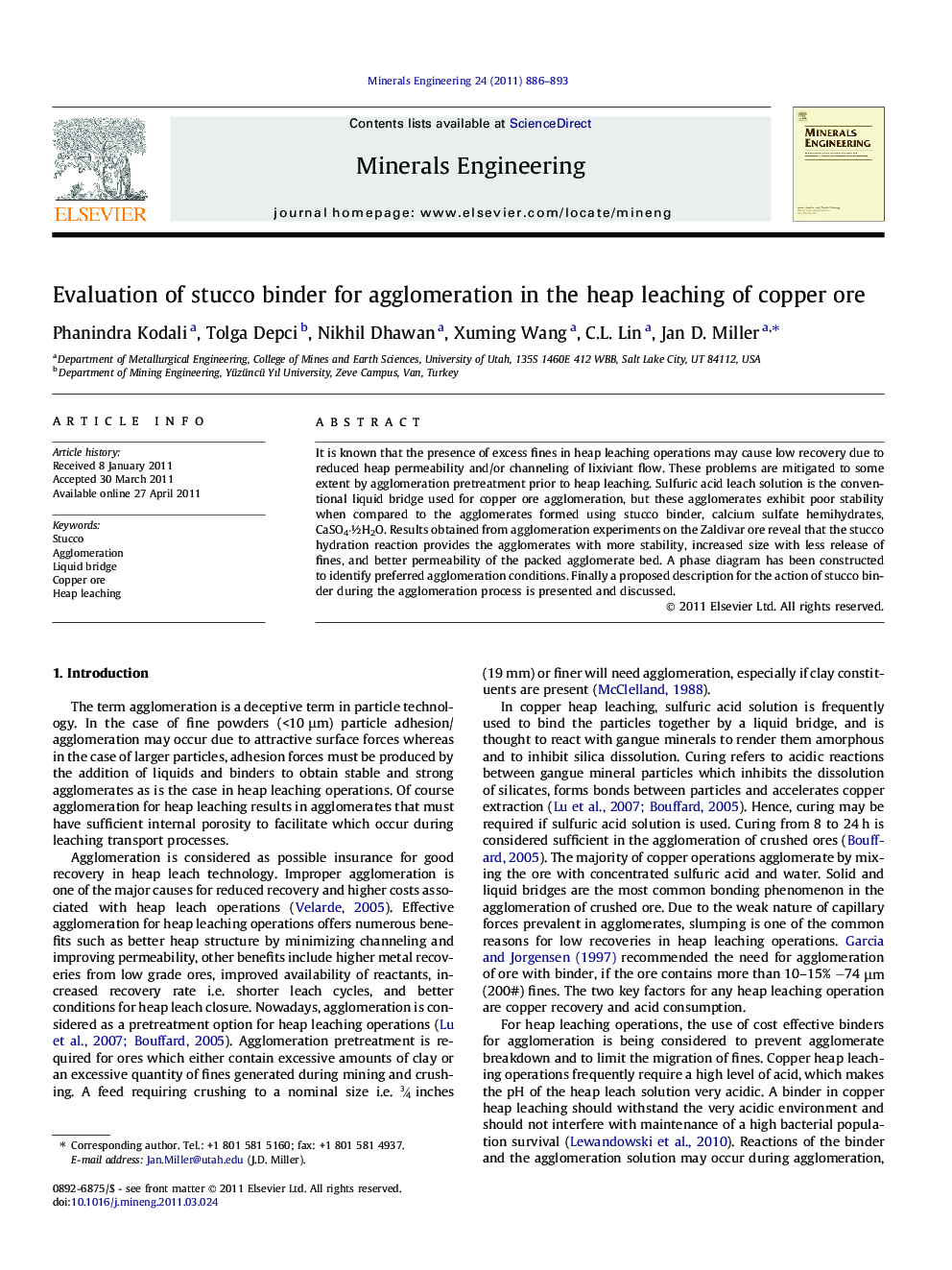| Article ID | Journal | Published Year | Pages | File Type |
|---|---|---|---|---|
| 233761 | Minerals Engineering | 2011 | 8 Pages |
It is known that the presence of excess fines in heap leaching operations may cause low recovery due to reduced heap permeability and/or channeling of lixiviant flow. These problems are mitigated to some extent by agglomeration pretreatment prior to heap leaching. Sulfuric acid leach solution is the conventional liquid bridge used for copper ore agglomeration, but these agglomerates exhibit poor stability when compared to the agglomerates formed using stucco binder, calcium sulfate hemihydrates, CaSO4·½H2O. Results obtained from agglomeration experiments on the Zaldivar ore reveal that the stucco hydration reaction provides the agglomerates with more stability, increased size with less release of fines, and better permeability of the packed agglomerate bed. A phase diagram has been constructed to identify preferred agglomeration conditions. Finally a proposed description for the action of stucco binder during the agglomeration process is presented and discussed.
Graphical abstractImportant features in stucco agglomeration of fine ore particles at the surface of a coarse ore particle. (A) Initial mixing of ore particles, acid solution and stucco with formation of liquid bridge. (B) Final stable agglomerate structure formed by hydration of the stucco binder particles.Figure optionsDownload full-size imageDownload as PowerPoint slideHighlights► Use of stucco binder for agglomeration in column leaching of copper ore is discussed. ► Stucco hydration binds fines in a porous structure that does not hinder leaching. ► Preferred conditions are identified (amounts of stucco and sulfuric acid solution).
